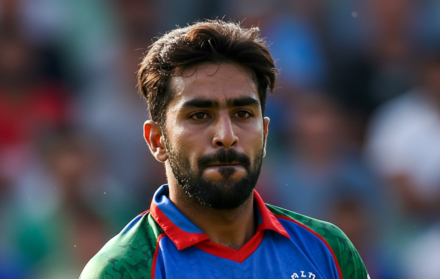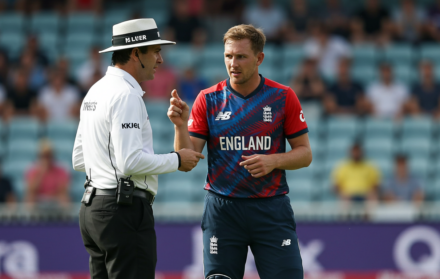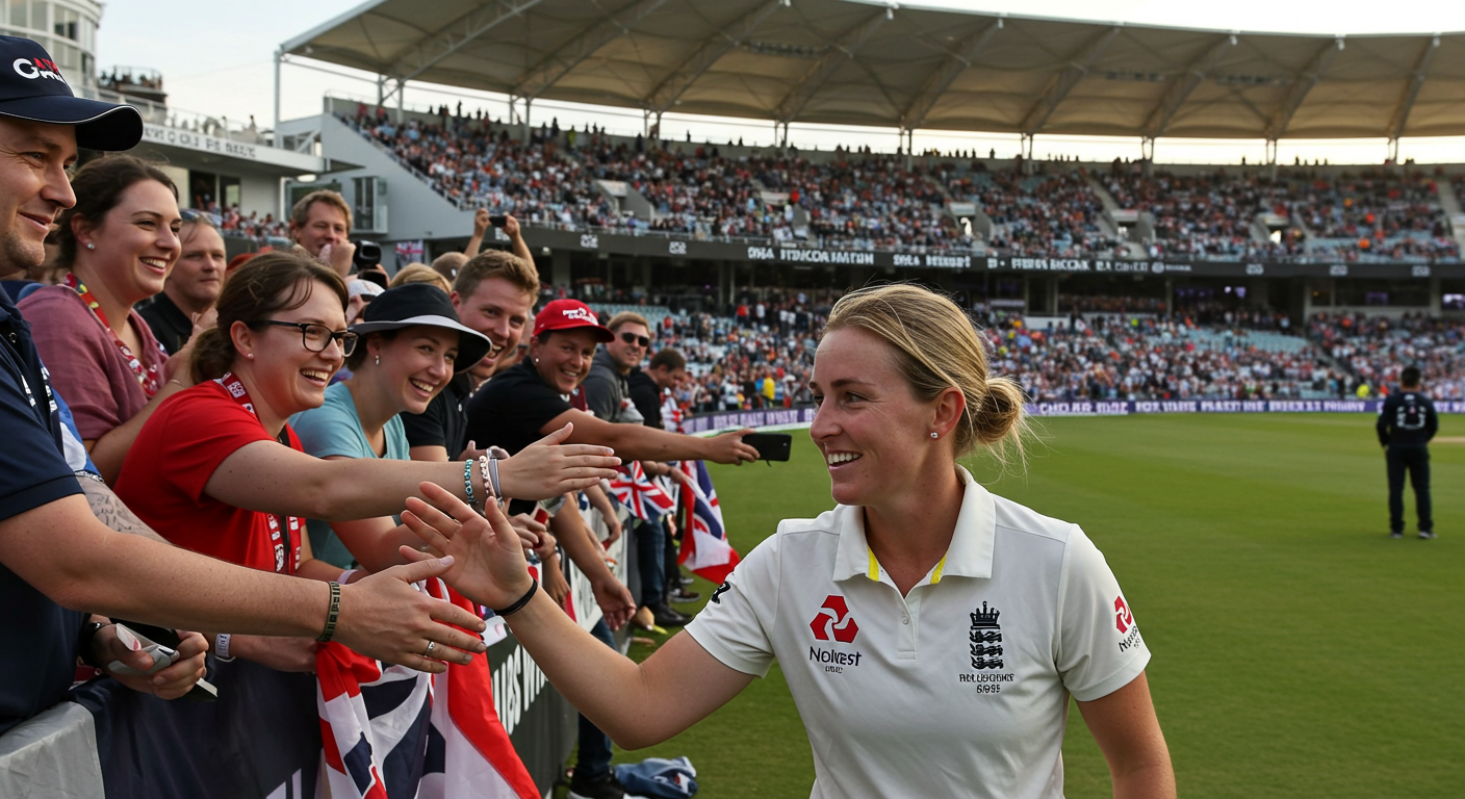
Heather Knight: Leading from the Front in Every Format
In an age of amplified voices and hyper-visible stars, Heather Knight has emerged not by declaring herself indispensable, but by proving it across time, formats, and pressure situations. Since taking over the England captaincy in 2016, she has not only maintained her place in all three formats but has shaped how England compete—with clarity, composure, and a deeply rooted sense of purpose that often goes unnoticed outside the scorecard.
Knight is not the loudest figure in the women’s game. Nor is she the most flamboyant with the bat or microphone. But her record, resilience, and leadership under changing conditions mark her as one of England’s most influential modern cricketers. She bridges the gap between the Charlotte Edwards generation and the bold, aggressive style that defines the current England side—a transitional figure who never treated the role as a baton to hold briefly, but rather a responsibility to evolve with.
This article is not a biography of highlights. It is a closer look at how Heather Knight, through a mix of technical grit and tactical nuance, has anchored England’s ambitions across formats—and how, in doing so, she has become both a leader of results and a leader of tone.
Early Career: Patience, Progression, and the Long Way Round
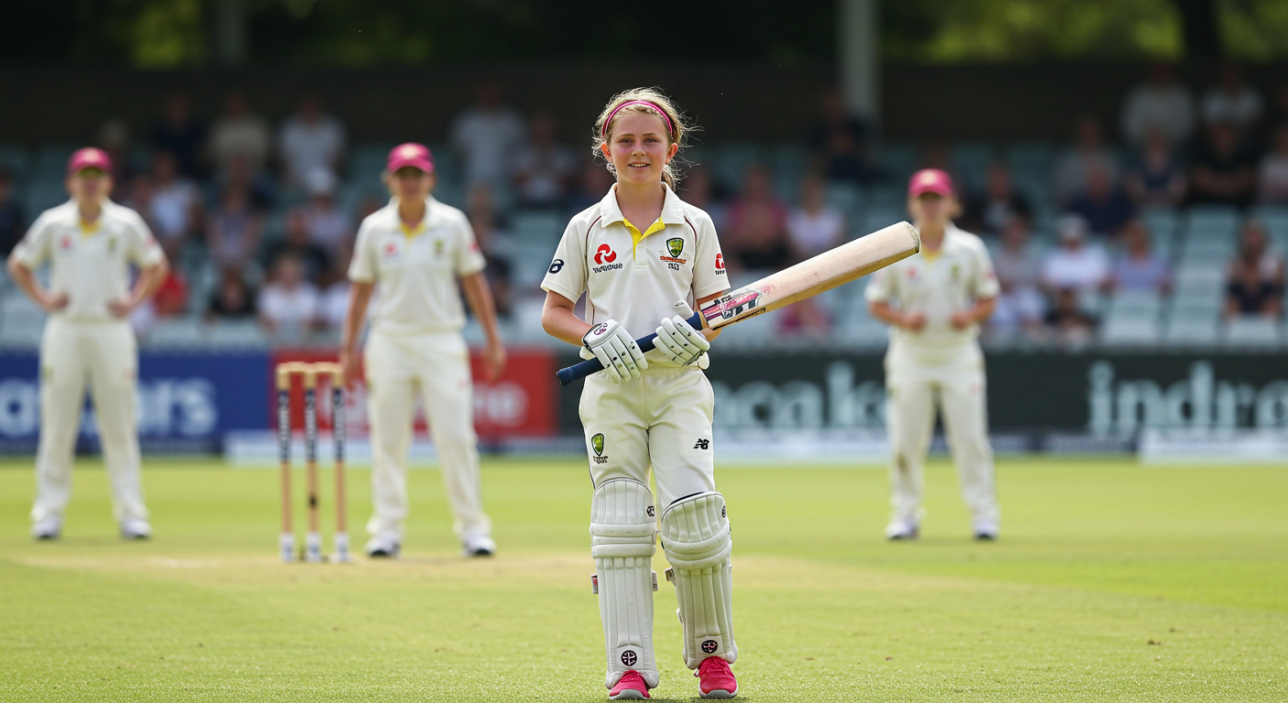
Heather Knight’s arrival into the England setup was neither hyped nor hurried. Born in Plymouth and educated at Cardiff University, her early journey was grounded more in quiet accumulation than explosive arrival. She did not come through a system that immediately cleared space for her. Instead, she forced her way in through runs—piled up first in county cricket for Berkshire, and then with Devon and Middlesex.
Her international debut in 2010 was the result of consistent domestic form, but not an overnight endorsement of stardom. It would take her several years—and an England batting line-up still dominated by Charlotte Edwards, Lydia Greenway, and Sarah Taylor—before she was a first-choice name on every team sheet. During this time, Knight developed her game by necessity. Her technique became compact, her stroke play increasingly calculated, and her mindset adapted to roles that required flexibility. She could open, bat in the middle, or rescue an innings—all without needing to be the focal point.
This adaptability would become the backbone of her career. While other players emerged in bursts of form, Knight built hers brick by brick, series by series. She scored her maiden ODI century in 2012, anchoring a difficult chase against India, a performance that signalled not just potential, but a temperament suited to leadership—even before the title came.
When the captaincy eventually did arrive, it wasn’t a handover of comfort. Charlotte Edwards, her predecessor, had been a towering figure in women’s cricket for over a decade. Knight inherited a dressing room shaped by a different rhythm and a different voice. What she brought was not an attempt to replicate it, but a deliberate move to modernise—quietly, firmly, and without alienating what came before.
Captaincy and Transition: Taking the Reins After Edwards
When Heather Knight succeeded Charlotte Edwards as England captain in 2016, the moment carried with it both the weight of legacy and the uncertainty of transition. Edwards had led the team for a decade, redefining expectations and cementing England as a global force. Her departure left a vacuum not just of experience but of personality—a role Knight would fill not by trying to emulate, but by quietly resetting the tone of leadership.
Knight’s approach to captaincy has always been measured rather than performative. She doesn’t dominate a huddle with charisma, nor does she lean heavily on slogans or manufactured inspiration. Instead, she sets standards through clarity—clear plans, clear roles, and clear expectations. From her earliest press conferences as captain, she projected steadiness rather than revolution, promising evolution rather than overhaul.
Yet, under her leadership, that evolution has been profound. England’s style became more proactive—more aggressive with the bat, bolder in selections, and increasingly innovative with spin-heavy bowling attacks in white-ball formats. Knight wasn’t a passenger in this change; she was often the instigator. While head coach Mark Robinson pushed for modernisation, Knight ensured that the dressing room bought in, adapting the culture from within.
Her own form never wavered under the added burden of leadership. In fact, it flourished. As captain, she averaged more with the bat in ODIs and maintained her place in the Test and T20 sides without question. Her ability to compartmentalise—leading a side tactically while contributing as a top-order batter—became one of her greatest strengths.
2017 World Cup: The Defining Chapter
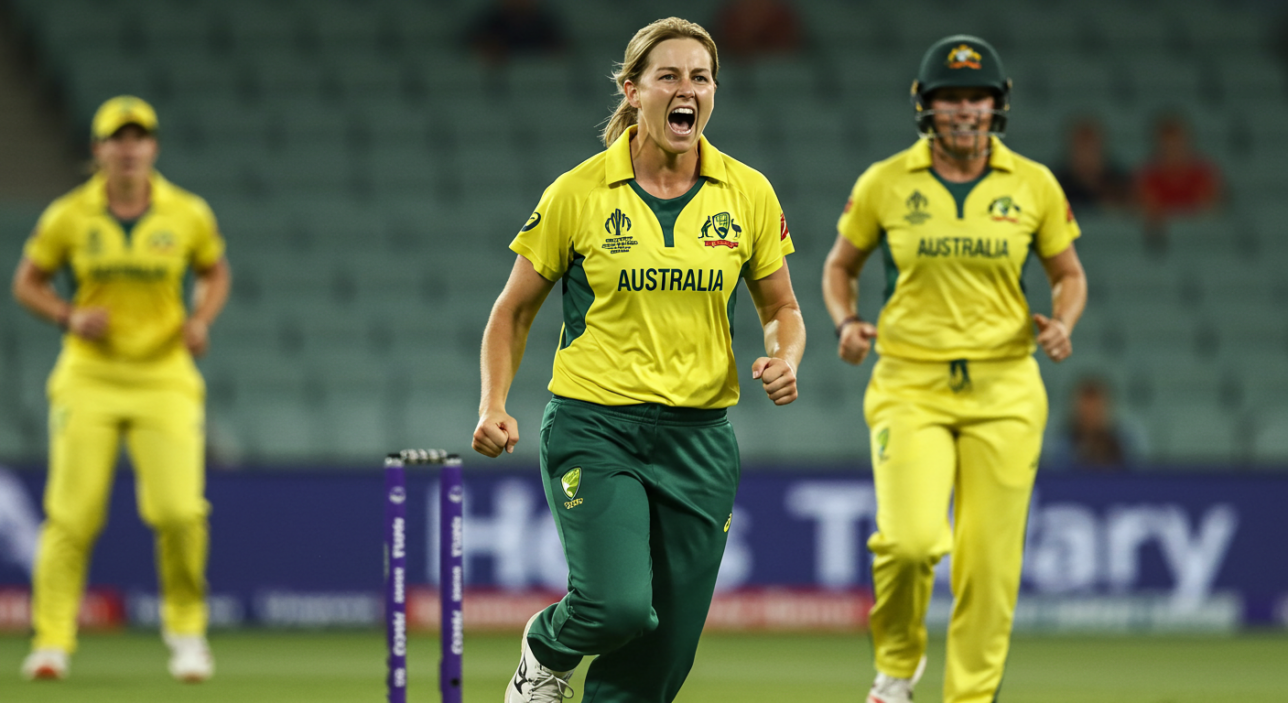
No assessment of Heather Knight’s leadership is complete without examining the 2017 Women’s Cricket World Cup—a tournament that not only changed the perception of the women’s game in England, but also cemented Knight as a leader of substance and steel.
England started the campaign with a shock defeat to India, which exposed a side still adjusting to its newer, bolder identity. But instead of fracturing, Knight’s team recalibrated. They won their remaining group matches, including a pressure-soaked thriller against Australia, with Knight contributing crucial innings along the way—not headline-grabbing centuries, but pragmatic scores that held the line and allowed others to flourish.
Knight’s leadership throughout the tournament was most visible not in animated gestures, but in how the side responded to pressure. Whether it was the use of her bowlers in tight spells, her field placements, or the space she gave to younger players like Tammy Beaumont and Nat Sciver to thrive, it became clear that she had built a dressing room that trusted its own blueprint.
In the final at Lord’s, it was Anya Shrubsole’s six-wicket haul that made headlines, but Knight’s steady innings and field direction—particularly in the last 10 overs—were critical in pulling England back from the brink. When the last Indian wicket fell, and England were crowned champions, it wasn’t just the culmination of a campaign. It was the affirmation of Knight’s leadership—a calm hand steering a talented side through chaos into history.
The impact of that victory extended far beyond Lord’s. Crowds grew. Broadcast numbers surged. Girls in schoolyards began mimicking Shrubsole’s seam position and Knight’s batting stance. England women’s cricket, for the first time in decades, wasn’t riding the tailwinds of success. It had become a national sporting conversation, and Knight was its voice of clarity and control.
Mastering the Formats: Adaptability as a Signature
In an era where many players shape their careers around one or two formats, Heather Knight has remained a fixture in all three—not through sheer weight of reputation, but through continuous, deliberate evolution. What makes her career particularly notable is not just that she plays Tests, ODIs, and T20s, but that she contributes meaningfully in each, adjusting her approach with a level of tactical maturity that few achieve.
In Tests, her game is grounded in patience and precision. Knight has shown a willingness to occupy the crease for long periods, building innings the traditional way, respecting conditions, and trusting her defence. Her unbeaten 168 against Australia in the 2022 Ashes Test remains one of the finest modern Test innings in the women’s game—crafted over more than six hours, it was a study in composure, constructed against a bowling attack that probed relentlessly. She didn’t dominate the match so much as she outlasted it, absorbing pressure and turning a collapse into a contest.
In ODIs, Knight has found her most consistent rhythm. Batting typically at No. 4, she offers England the ideal balance between consolidation and aggression. When early wickets fall, she steadies the innings. When the platform is set, she accelerates with precision. Her ability to rotate strike, to judge tempo, and to shepherd the middle order makes her one of the most tactically astute one-day batters of her generation.
And in T20s—where roles are often more dynamic and attention more fleeting—Knight has remained relevant not by trying to emulate power-hitters, but by understanding the value of placement, timing, and game awareness. She has reinvented herself multiple times within the format, often batting lower down the order or shifting gears depending on match scenarios, contributing in ways that rarely make highlight reels but frequently shift momentum.
What defines her across these formats is not flamboyance, but clarity. She reads situations, adapts quickly, and does what is needed—not what is noticed.
Holding the Line Through Transition
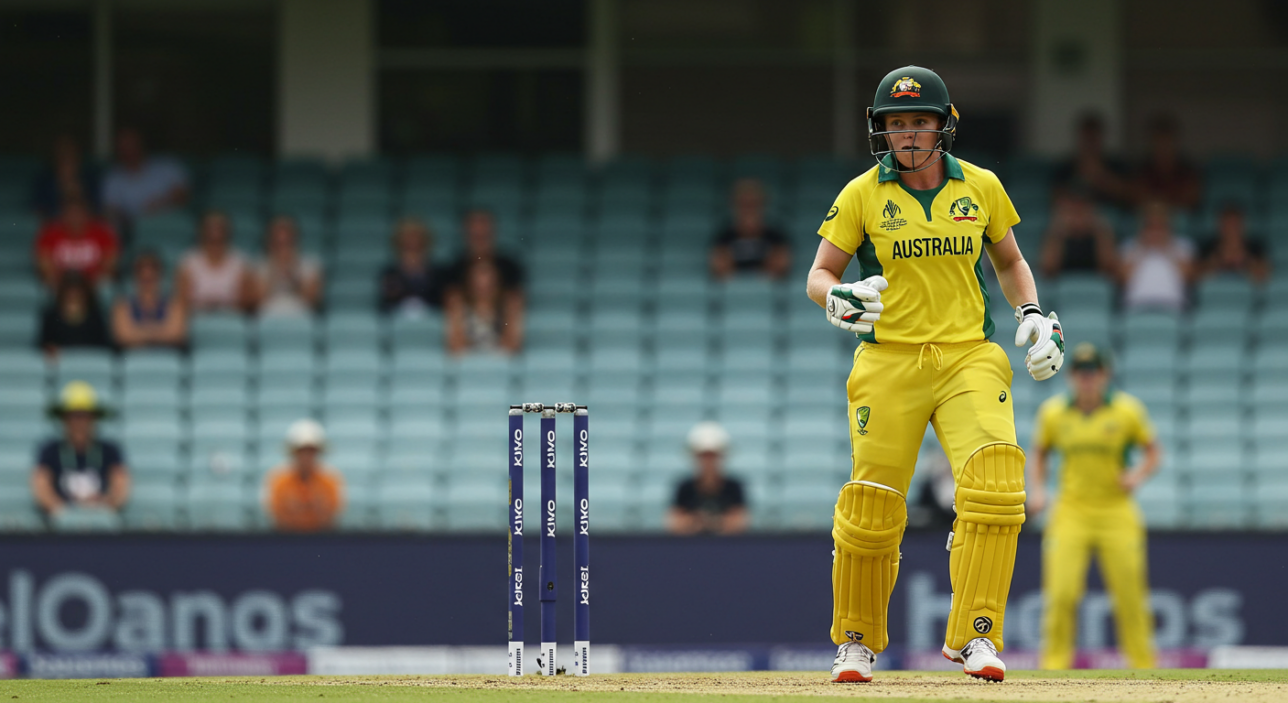
Captaining a side through transition is perhaps the most thankless task in cricket. Results dip, scrutiny rises, and comparisons with past eras become louder. Heather Knight has experienced all of it—post-2017, as senior players like Katherine Brunt, Anya Shrubsole, and Fran Wilson retired or stepped back, and younger talent stepped forward with promise but not always consistency.
Through this generational shift, Knight has remained a stabilising force. She hasn’t tried to micromanage the next wave of England talent, nor has she insulated herself from accountability when results have faltered. Instead, she has led with an understated resilience—supporting new leaders like Nat Sciver-Brunt and Sophie Ecclestone, while continuing to deliver with the bat and providing a steady voice in an increasingly crowded media space.
Her value during this period has gone beyond the runs. She has managed expectations, buffered criticism, and protected teammates in interviews and behind closed doors. When England suffered setbacks—such as their group-stage struggles in the 2022 ODI World Cup or losses in high-profile T20 matches—Knight didn’t deflect. She explained. She absorbed. And then, quietly, she rebuilt.
Her leadership style is often described as understated, but in reality, it is highly intentional. She gives room for players to grow, avoids over-reliance on any one individual, and insists on planning over panic. That she has been able to retain England’s competitiveness during this time—reaching World Cup finals, staying in contention across formats—is no accident.
Knight’s contribution to English cricket is, in part, statistical. But it is also emotional and structural. She has led a team through the challenge of ageing stars, of surging opposition (not least Australia), and of rising public scrutiny—and has emerged, each time, with her standing intact and her influence deepened.
Beyond Statistics: A Leader Who Redefined Balance
Heather Knight’s value to English cricket has never been about just her averages or her strike rate, though both remain impressive across formats. What elevates her career is the way she has made adaptability, patience, and professionalism her defining strengths, even in an era increasingly drawn to spectacle. She is not the loudest player in the room, nor the most flamboyant on the field, but she is almost always the one most essential to balance—tactically, emotionally, and strategically.
As women’s cricket entered its most commercially visible and competitive era, Knight maintained a steady line between embracing progress and resisting distraction. She has captained England during a time when the sport has had to evolve rapidly—media expectations, full-time contracts, the rise of franchise leagues, and the growing intensity of rivalries, especially with Australia. Through it all, she has neither tried to manufacture a brand nor chase headlines. Her authority has never relied on bravado. Instead, she has been the kind of leader who sets tone by example and earns loyalty without demanding it.
That approach is visible in the way younger players speak of her. She is accessible but firm, trusting but demanding, and always aware of the broader moment without becoming swept up in it. Her presence during press conferences after losses is often more instructive than any statistic—honest, composed, and focused on what’s next.
And as the sport continues to evolve—with rising stars, multi-format series, and increased investment—it is no small thing to say that Knight’s style of leadership has become a reference point for what a stable, modern captain can look like.
Heather Knight: A Captain for All Conditions
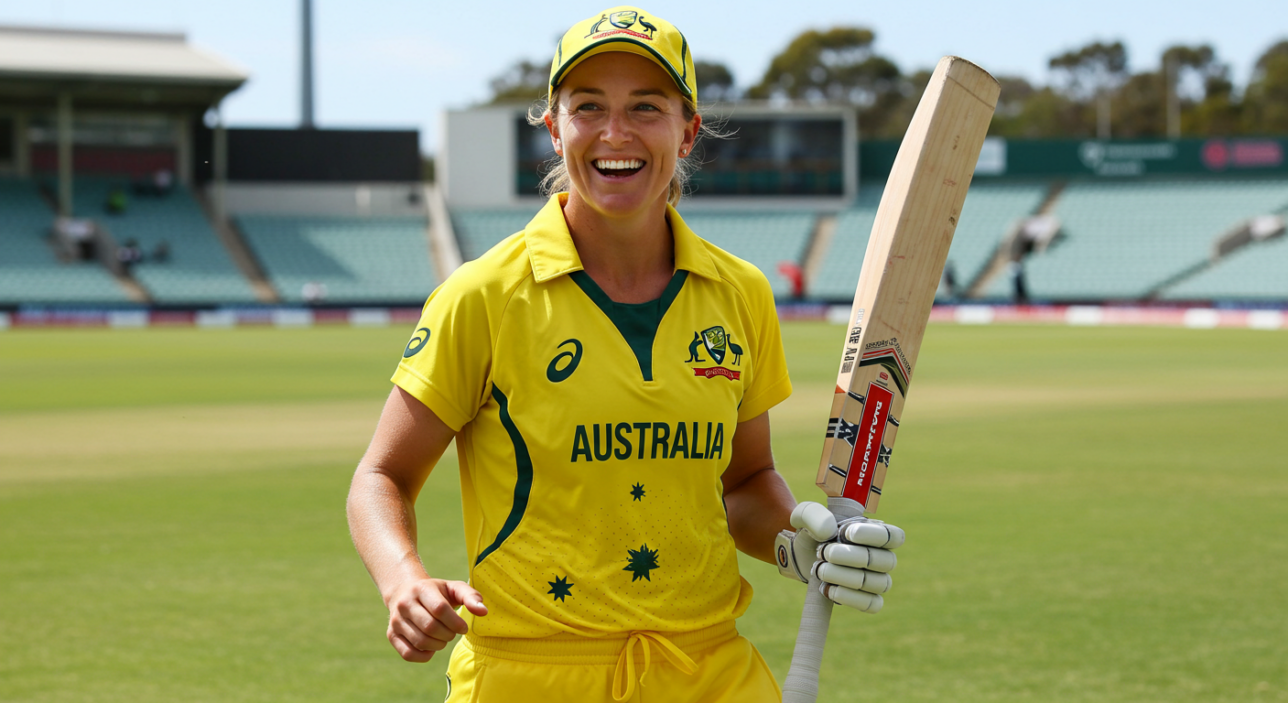
In the shifting landscape of women’s cricket, where visibility is growing and expectations are rising, Heather Knight stands as a singular figure—not because she has reinvented the game, but because she has held it together through reinvention. Her legacy is not built on a single campaign or a record-breaking innings, but on her ability to perform across formats, manage change, and lead with an unshakeable calm that has proven invaluable time and again.
She is the type of player every dressing room needs and every opposition respects—dependable when the situation turns volatile, clear-headed when chaos looms, and relentless in her pursuit of small, meaningful contributions that win matches over time.
As captain, she has brought structure to transition, vision to strategy, and quiet steel to moments when louder voices might have faltered. As a batter, she has delivered runs in every format, on every continent, and often in the moments when her side needed them most. As a public figure, she has helped shape a version of leadership that feels grounded, intelligent, and sustainable—something increasingly rare in high-performance sport.
Heather Knight may never be described as a cricketing revolutionary, but her presence has been quietly transformative. She has shown what long-term excellence looks like when it’s built not on force of personality, but on clarity of thought, depth of preparation, and genuine care for the team she leads.
